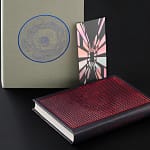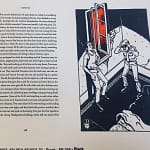When it comes to creating something the way I imagined it (perfect, of course), I tend to be pretty annoying. Just ask my colleagues in Amaranthine Books, friends, family etc. I have this itch that everything has to be absolutely perfect. Which is, obviously, impossible.
Luckily, I think I have some grip over this obsession with perfection, so it’s mostly has a good outcome. But it can be tiresome sometimes, for myself and even more so for others.
How our project manager reacts when I start getting new ideas in the middle of the development.
Amaranthine Books and our first project The Strange Case of Dr. Jekyll and Mr. Hyde was plagued with this as well. But in this case, I dare to say it turned out for the best, with the little help of others who have turned my escapades down a notch. Still, there are a few interesting tidbits about the whole (or)deal.
“Interesting tidbits” — everyone else who worked on the project.
Lesson #1 – No plan survives first contact with execution
Back in summer of 2015 we started the production of the prototypes. We have nailed down the concept, the illustrations were finished, and we planned for two versions of the book — Jekyll edition which would be printed on white Munken paper, bounded in vivid green hard covers with matching colored page edges (thank goodness that never happened and that we went with white); and Hyde edition, printed on black Pop’Set paper, bounded in striking black hard covers with black illustrations. Obviously, we wanted to reflect the characters from the novella and even represent the duality from the story with two separate editions. The plan was to print the Jekyll Edition prototypes first while we wait for technicalities that will enable us to print on black paper for the Hyde Edition. Pretty simple, right?*
*Right…
The first Jekyll edition got out of print and was delivered to my hands. It was horrible. Unworthy. Don’t get me wrong, it was still better than most of the books you’ll find around, but nothing like we imagined. So I went out to our print production and tried to explain that this won’t do. It isn’t what we want to do and it certainly isn’t something we’d be comfortable asking money for. I am still thankful nobody shot me that day. Or, you know, stabbed me.
What I imagine was going on in their heads.
Lession #2 – If you can’t do things right, do what’s left
After some talk it was decided that we will abandon Jekyll Edition for the moment — we couldn’t get the cover material in small quantities for the prototypes anyway, so maybe it would be best if we just focus on the technically more challenging book — Hyde Edition.
Which meant even more headache… at first.
With some last minute changes (“Hey, how about we put cocaine formulas on endpapers, since the writer was under influence during the writing!”) Hyde edition saw the light of the day. On that day the little perfectionist in me was truly as one with the universe. Sure, there were minor details to be improved in the final version, but this prototype was finally something we were proud of. Turns out, months later, this prototype won Inkspiration award in Best of Publishing category at DScoop in Tel Aviv. To this day I’m sure that even if all our other plans fail, we can be proud of these two books and the idea behind them. But the big question here is this: when to stop being a perfectionist a**hole?
Well, food for thought.
Lesson #3 – Pick your battles and win the war (mainly against yourself)
I don’t think there is a simple answer. We approached a lot of the development with borderline perfectionism — gorgeous Brioni typography by Nikola Đurek; easter eggs hidden inside the book for the reader to find; double-sided illustrations of key points in the book to remind the reader of two different outlooks; box for the book with two faces, one with Hyde’s claw marks on it… The list goes on. And if we didn’t push for it, it wouldn’t be this good. If we pushed harder and lost the sight of the big picture, we might have never finished anything.
Decisions, decisions, decisions.
I guess the point is there will always be something to add, delaying the final product indefinitely, so it seems it’s an art of picking battles. Give up on one prototype and focus on the other. Get great typography, but limit the number of prototypes. Prioritise. Recalculate. I’m sure there are some things we could have done even better, but this seems really good. And really good sees the light of the day, while perfect never will.
Balance is the key.




